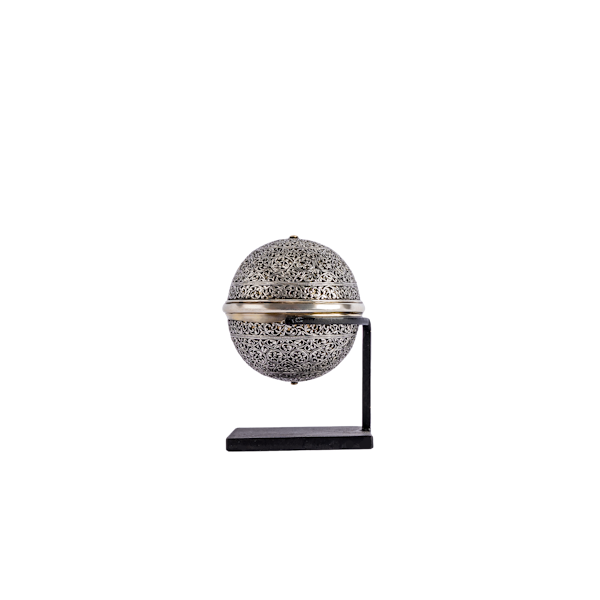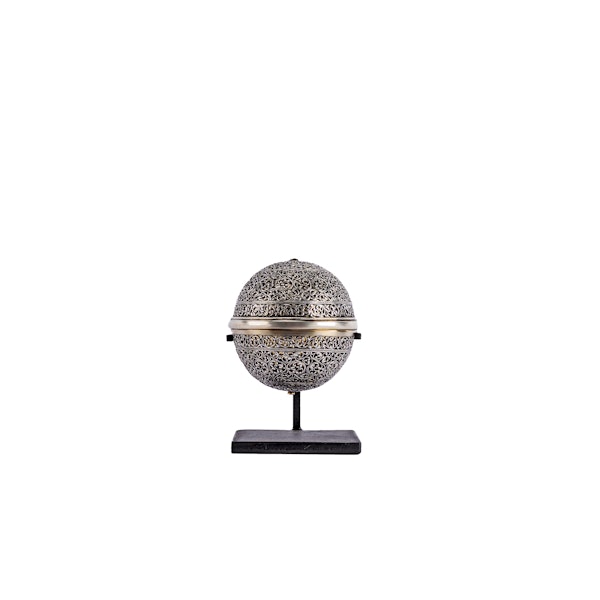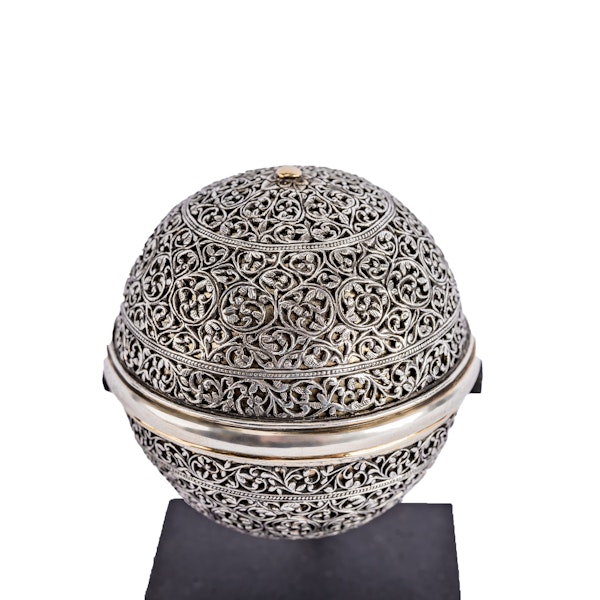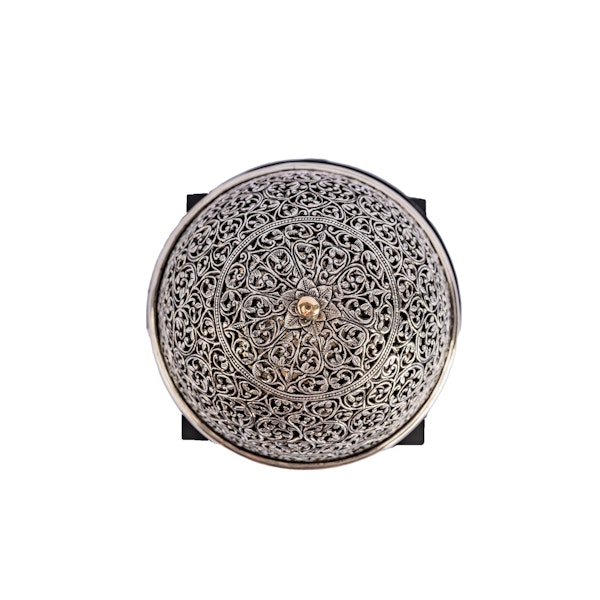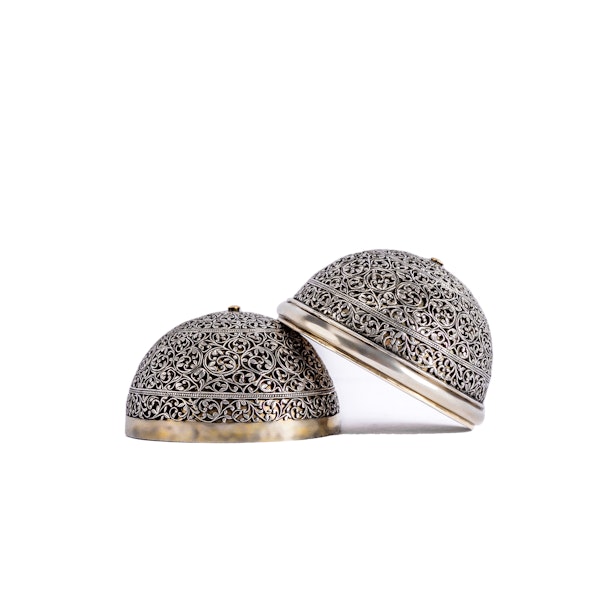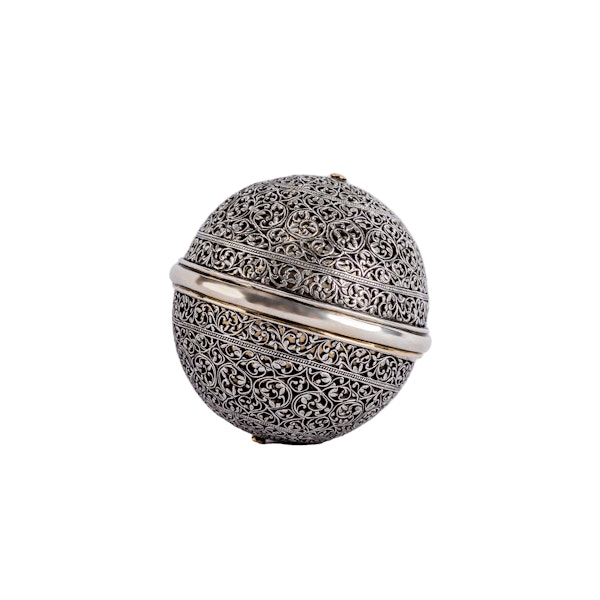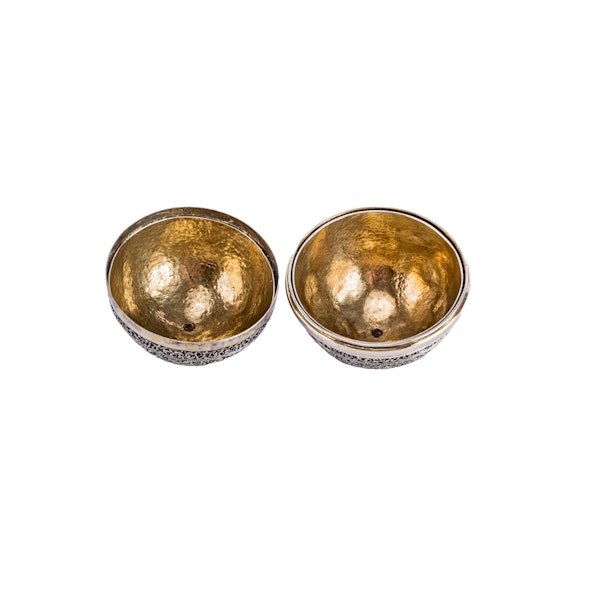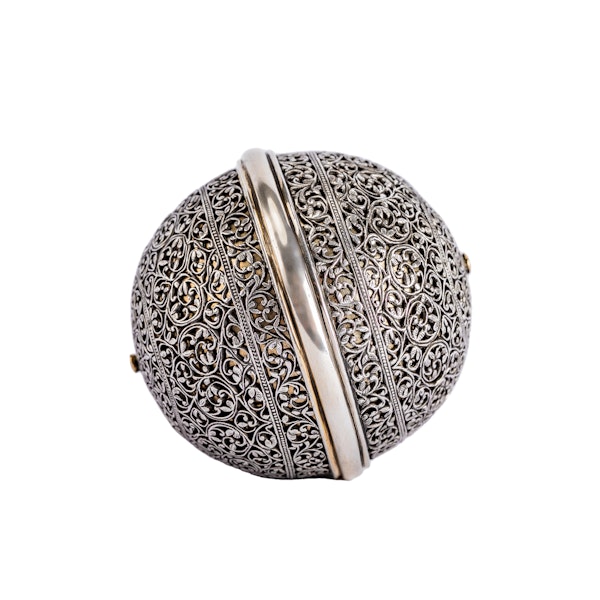A fine silver and parcel gilt bezoar stone case, Indo-Portuguese, late 17th century
A fine silver and parcel gilt bezoar stone case, Indo-Portuguese, late 17th century
POA
Description
A fine silver and parcel gilt bezoar stone case, Indo-Portuguese, late 17th century of oval form with decorative piercing over a gilt base.
The word bezoar is derived from the Persian pād-zahr which literally translates as 'anti-dote'. The secretions that form in the belly of wild goats, and to which the word is applied, became one of the most sort after and rarest of cures. It was believed to have the power of a universal antidote, would work against any poison, and that a drinking glass which contained a bezoar could neutralize any poison poured into it.
Already used in the near and far east (in China a form of bezoar from Ox was used in medicines) it was introduced to medieval Europe in the 11th century. The Andalusian physician Ibn Zuhr (d.1161) may have been the first in the west to describe the bezoar as a medicinal item and they are often referenced in later medical treatises.
The properties attributed to the stones resulted in a vast demand for them from monarchs and others at the top of society. This resulted in the stones being more prized than gold and consequently they were often housed in containers of great value that became an integral part of the Kunstkammers that grew up in Europe in the late Middle Ages and renaissance.
The exceptionally large bezoar mounted in gold with emerald decoration in the Kunsthistorisches Museum Vienna
During the 16th century the demand resulted in several substitutes being created, the most successful being the Goa Stone or Lapis de Goa. The inventor was the Florentine lay brother Gaspar Antonio, and a Jesuit monopoly was confirmed by the Portuguese on March 6, 1691. They were created by combining organic and inorganic materials including hair, fossil shark teeth, shells, tusks, resin, and crushed gems, then shaping the materials into a ball and covering it with gilt. Like bezoar stones, Goa stones were thought to prevent disease and cure poisoning. They could be administered by shaving off small pieces into a drinkable beverage like water, tea, or wine.
The enduring legend of the bezoar can be seen in its inclusion in the Harry Potter series of books where the bezoar is used as a cure for poison.
This example is beautifully decorated with a very fine piercing of trailing plants, each half being divided into three registers demarcated by a thin band. The top is further decorated with a flower head from which a small gilt knob rises. The very fine design points to a craftsman of skill and is similar to other examples of Indo-Portuguese work from the 17th century usually originating in Goa.
A bezoar case with stand that shows similar decoration in a simplified form in the collection of the Metropolitan Museum
| item details | |
|---|---|
| Origin | Other |
| Period | 17th Century |
| Style | Other |
| Condition | Excellent |
| Dimensions | Width:6.2cm Height:6.5cm |
| Diameter | Weight: 124 grams |
Product REF: 10066
